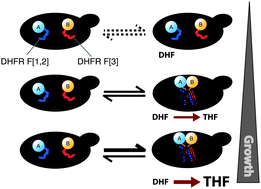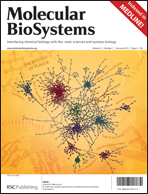One of the most important challenges in systems biology is to understand how cells respond to genetic and environmental perturbations. Here we show that the yeast DHFR-PCA, coupled with high-resolution growth profiling (DHFR-qPCA), is a straightforward assay to study the modulation of protein–protein interactions (PPIs) in vivo as a response to genetic, metabolic and drug perturbations. Using the canonical Protein Kinase A (PKA) pathway as a test system, we show that changes in PKA activity can be measured in living cells as a modulation of the interaction between its regulatory (Bcy1) and catalytic (Tpk1 and Tpk2) subunits in response to changes in carbon metabolism, caffeine and methyl methanesulfonate (MMS) treatments and to modifications in the dosage of its enzymatic regulators, the phosphodiesterases. Our results show that the DHFR-qPCA is easily implementable and amenable to high-throughput. The DHFR-qPCA will pave the way to the study of the effects of drug, genetic and environmental perturbations on in vivo PPI networks, thus allowing the exploration of new spaces of the eukaryotic interactome.

You have access to this article
 Please wait while we load your content...
Something went wrong. Try again?
Please wait while we load your content...
Something went wrong. Try again?


 Please wait while we load your content...
Please wait while we load your content...